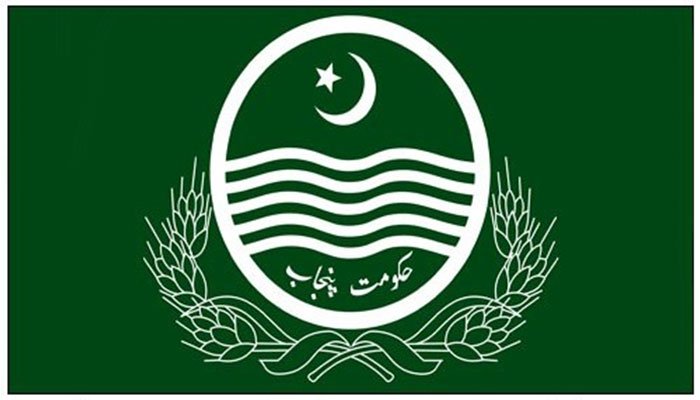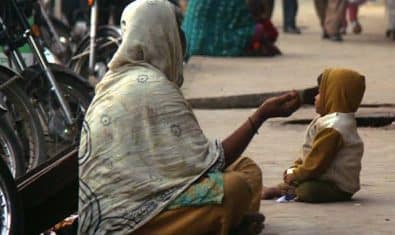by Javed Ahmed Malik
Many don’t realize that Punjab’s new local government act is a major step forward in empowering local citizens. However, the government will have to work very hard to make the very centralised province of Punjab into decentralized and (almost) autonomous governments.
This is a first brief assessment of the Punjab local government system passed by Punjab Assembly written right after passing of the law. The assessment provides a broad overview of the law and its expected effects as well as an initial analysis of remaining gaps and necessary further improvements.
This analysis is not in-depth and complete; however, it is important to analyse and start the discussion on what is known today.
What Does the New Law Achieve?
In Punjab, the law establishes the first ever political party backed local government system with actual promise of devolution of power and autonomous governments at the grassroots level.
General Musharraf’s military government had previously introduced a local government system in 2002 which was bolder in terms of the powers it vested in the elected officials specially at the district level than the present one and was in place till 2008.
However, it was always suspected as an effort to sustain military rule. A political party backed local government system is not a guarantee that the system will achieve political sustainability. More work is needed to reach to a political settlement and to ensure that the law is widely respected by all political groups.
The opposition in the Punjab assembly have expressed reservations about the proposed local government changes at the district level and challenged the law in court. However, in view of the elections expected next year for village councils and for Tehsil and city elections and with time to better understand the law there is hope that the opposition will contest these elections and be present in the local-level constituencies and thus become more supportive of the system.
Reducing the basic unit of government from Union Council to village level is an important attempt to empower local communities.
The law also foresees autonomous government at sub-district or Tehsil level, comparable to the functioning of District Nazim in past. The direct election of these will make them more accountable to their electorate and result in projects and priorities beneficial to their community.
The proposed village level structure is simple. It will ensure participation and effective collaboration for local development schemes. Under the new law, the villages will be able to decide on their own budgets and receive their own funds which is a step in the right direction.
However, the law ignores the district tier of government by not introducing a political office there. That will make the bureaucratic office of the deputy commissioner (DC) more powerful.
Most DCs are not trained to work with locally elected politicians and are better versed in laws and financial matters as civil servants. They therefore enjoy more power and influence.
Only during 2002-2008 they worked under elected district politicians as provided for by the local government act 2002 in the time of General Musharraf. At the first opportunity in 2008, this law was abandoned under the new political government.
ALSO READ
Take Our Survey to Help Make Democracy Stronger!
Secondly, sub-district structures are weak, understaffed and less experienced in working independently than the district level. In some districts, especially the sub-district state structures like social welfare and agriculture departments are very weak. This begs the question how the Tehsil level tiers of local government will coordinate and ensure efficiency in service delivery while being managed by district level state structures.
Similarly, more specialized services like education and health are so far being managed by the provincial authorities and have an elaborate district level monitoring and management regime. The law is silent about what coordination mechanisms will be employed to resolve day to day coordination issues and oversight roles. The combination of strong unaccountable bureaucracy at district level and weak state system at Tehsil level could lead to administrative chaos especially in the first year.
The act provides sufficient implementation power and framework for the governments to perform effectively.
The law provides vast powers in the areas of basic education and health, sanitation, local resource distribution and management. Chapter IX outlines the roles and responsibilities of the head of the local government (Mayor/Lord Mayor), convenor (speaker of the assembly) and Chief Officer (a bureaucrat) to run government functions.
Chapter Four of the law deals with local government clauses, including specific clauses on provision of funds and management as well as powers to collect local taxes. These decentralized powers are a departure from previous centralized laws in Punjab. Elaborate linkages are provided with the provincial finance commission, redressal mechanisms and control over local finances, for example in case of abuse. Chapter XII gives power to local governments to form committees or sub-committees for any special purpose or to solve specific local problems.
This new system will need information dissemination and capacity building efforts to make it work well. The initial months will be challenging given that existing structures at sub-district level are relatively weak and district officials may resist any reduction in their powers.
The act acknowledges that the provincial government will have change its approach to work with over 250 local governments and 22,000 village level governments
Roughly 146 Tehsil councils, 9 city governments and more than 100 municipal governments (which will be formed in towns with more than 100,000 inhabitants. Therefore at least three new institutions are being proposed at provincial level including:
- Provincial Finance Commission dealing with fiscal issues as per Chapter XXII
- Local Government Inspectorate as per Clause 207 of Chapter XXVI as a performance audit function
- Local Government Commission XXX on broad policy and conflict resolution issues.
More work (and analysis) is needed to make these institutions effective in providing support to the functioning of the local government system. The law details the formation and role of these new institutions.
However, further thinking is needed to ensure that these new institutions support and solve issues for local governments pro-actively and regularly. Previous experience with effectiveness of provincial bodies is weak.
ALSO READ
Take Our Survey on Local Governance and Help Make a Difference!
The law therefore needs further details on implementation mechanisms. Civil society and independent experts should play an active role to ensure that these bodies fulfil their responsibilities.
The commitment to allocate 30-40 percent of the provincial budget for local governments is a major departure for Punjab
Historically, Lahore, the provincial capital received most funds. A mechanism and criteria should be designed to mitigate disparities between developed and less developed districts, tehsils and villages.
Public Participation is explicitly foreseen in most cases, which is a great step forward
As a step to strengthen oversight of the local government system, the public can attend most council meetings. More detailed provisions should exist to allow civil society and media to attend these meetings.
What are the Remaining Shortcomings of the Law?
The law lacks a clear focus on human rights protection
It is important to clearly state what problem the local government system is trying to solve. Clause 5, Chapter II explains the role of local government and its responsibility for (a) development (b) representation/consultation (c) communication functions as a government tier.
This framing could have been more progressive in line with the constitution of Pakistan to ensure the protection and safeguarding of human rights of weaker sections of society. This concept would have allowed law makers to protect the rights of vulnerable citizens for example against the misuse of police authority (in the form of non-custodial detentions, torture, bribery) and protection of freedom of speech by local media or minorities.
The law does not envisage any human rights safeguards for the protection of citizens or police oversight functions in the form of a safety commission.
Representation of women, youth
The law includes a quota for women and religious minorities, its share, however, is less than 33% which the previous local government systems in 2002-2008 had. Similarly, there is no mechanism for youth representation (66% of Pakistanis are less than 35 years of age).
Despite their numbers the hierarchal character of the society does not give youth enough representation in the political system. Especially young women will be underrepresented in the new system. It should also be emphasized that members of religious minority community can also stand for and be elected Village Chairperson or Tehsil Mayor.
This would have been an encouragement for them to contest elections representing everyone and not just their own community. In addition, there is no coordination mechanism for the representatives of labourer, women and minorities to coordinate with relevant district and/or provincial ministries and departments regarding their specific issues. In Pakistan’s conservative context this means that religious minorities will not have a voice in local politics and government.
The danger of overly bureaucratic oversight
Simplicity should be the key feature of institutions. This will help them to function more easily. The law establishes some complicated processes and poses barriers on ‘political and administrative autonomy’ of the local government system.
Elected representatives will be obliged to work under the control of the provincial government, which the law establishes, i.e. Local Government Commission, Local Government Finance Commission and district level Local Planning Board. The office of the deputy commissioner and his many line agencies (over 20) will not automatically work with the new governments.
ALSO READ
Our Survey on Local Governances Finds Out YOUR Perception!
Several administrative issues and potential conflicts have to be addressed. Procedural details on processes of the local government system and existing ambiguities in the legislation provide room to the bureaucracy to stall the implementation of the new law. Complex procedures and multi-layered institutional checks, which should ensure accountability of local councils, can result in an increase of administrative cost and possibly delay service delivery.
Such complexities will also make it difficult for less qualified or experienced local government representatives to understand or enact the law.
About the Author:
Javed Ahmed Malik is a Country Representative of Democracy Reporting International and the second edition of his book Transforming Villages: How grassroots democracy can end rural poverty at a rapid pace by IRD, Islamabad is released this month. Javed is thankful to Muhammed Rafique for his contribution in writing of this piece.

























